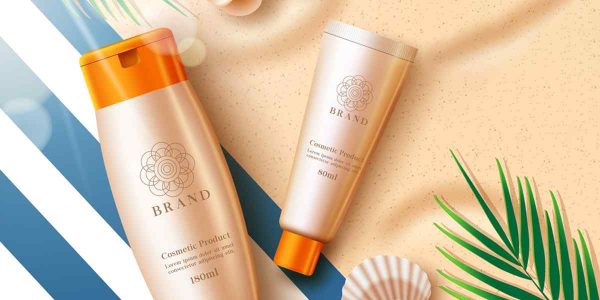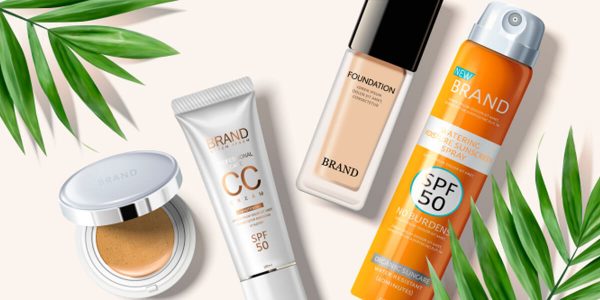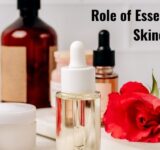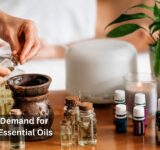- 26/03/2024
- Rohit Mishra
The skincare industry is booming like never before thanks to the growing consciousness of people towards healthy skin that glows in and out. With a multitude of skincare products flooding the market, it becomes imperative to understand the skin care products target market- or simply what group of customers to target with what particular products.
In this overview, we share with you the reasons why you should understand your target market for skin care products and what factors define the skincare target market.
Why Skincare Businesses Need To Navigate Their Target Market
Every skincare business needs to navigate the skin care target market demographics to get a deep understanding of its target consumers who are going to influence all aspects of the business. From product development to marketing and promotional strategies, your business completely revolves around target consumers and their choices.

Therefore, doing a skincare business without understanding the target market of skincare products is like swimming in unchartered waters aimlessly.
Analyzing the skincare market gives businesses a deep insight into the types of products to be pitched to different customers and how these products can be innovated and transformed to meet the evolving needs of consumers. It helps to position your brand successfully and meet customer expectations while creating a niche for your business in an already overcrowded market.
Factors To Consider When Defining Your Skin Care Target Market
The skincare market is vast, and it can never be tapped to its optimum unless it is fragmented into different groups or segments based on their choice of products and purchases. Here we take you through some of the major factors that define the skincare target market.
1. Demographics: Pillars of Your Audience Structure
Demographics relates to the study of the human population who shall be using your products. It includes considering the age, gender, geographic location, purchasing power, education, and income sources of the consumers.

Dividing the consumer base based on age helps in offering products as per their expectations, like sunscreens and face washes for youth and age-revitalizing creams and serums for adults. Segregating the population based on gender helps in targeting products specifically for either men or women.
Evaluating the economic status of the consumer groups helps to identify the upper, middle, and lower classes thus analyzing their purchasing power which plays a pivotal role in deciding the cost of products.
2. Skin Type Diversity: Embracing Beauty of Differences
Before you sell your skincare products, you need to know who you are selling your products to. Yes, if you aim to sell skincare to all, then the hard truth is that you cannot sell to anyone. We all have different skin types and different skin needs.

Instead of generalizing your customer base and offering them a one-fit-all product line, it is better that you segregate them according to their skin types and embrace and acknowledge the vast diversity in their skin tones.
Make your customers feel special and unique about their natural skin and assure them that you have a product for each of them depending upon their skin type. Create different skincare products to match the needs of varied skin tones like for oil, dry, normal, and combination skin.
This way you not only win customer trust but also make them feel connected with your product assuring that you understand their skin needs just like they do.
The skincare target market is broadly classified based on the following skin types.
2.1 Normal Skin

This skin type has versatile skin that needs well-balanced hydration, has minimal sensitivity, and displays a radiant complexion. The skin type prefers products that focus on gentle cleansing, restoring hydration and the natural glow of the skin by preserving the natural oils. They need products that protect their skin from environmental stressors like pollution and ultraviolet rays of the sun.
2.2 Oily Skin

The biggest challenge for oily skin types is to manage oil control without running the risk of stripping the skin of natural oils. These skin types prefer products like lightweight moisturizers and non-comedogenic products. These products prevent clogging of pores and the development of acne and pimples.
2.3 Dry Skin

Dry skin is deprived of moisture and hydration. People with dry skin choose skin products that have rich, hydrating formulations like creamy cleansers and serums that lock in moisture and keep the skin nourished and hydrated for long. Nourished skin looks rejuvenated and full of life.
2.4 Combination Skin

Combination skin is a mixture of both dry and oily skin. The main target products for this skin type are those that keep the skin hydrated in dry areas while controlling sebum in the T-spots. Consumers with combination skin use products that offer gentle hydration like lightweight cleansers and moisturizers along with serums that keep the skin hydrated.
3. Lifestyle & Values: Crafting a Narrative Beyond Skin Deep
The skincare target market is highly influenced by the lifestyle and values of individual consumers. With an increasingly hectic lifestyle, people especially women prefer skincare products that offer the best results with minimum engaging time.

This means gone are the days when consumers could devote time to a long skincare regime involving many complex steps. Accordingly, the target market for skin care products are guided by instant and all-in-one products like BB creams, moisturizer-based sunscreens, and tinted serums that offer skincare with quick applications.
Along with quick results, consumers are also becoming increasingly environmentally conscious and looking for organic products using sustainable ingredients that not only do wonders for their skin but also do not damage the environment.
This means a natural inclination towards earthy and organic products and eco-friendly packaging that does not use harmful chemicals and pollutants.
4. Skincare Concerns: Addressing Pain Points With Precision
While buying skincare products, consumers are always guided by their skincare concerns and problems. This means they will focus on buying products that target their problem areas and provide relief with regular use while uplifting skin quality in general.

A vast segment of consumers falling in the bracket of adolescence and youth like those between 18-30 years are most affected by acne, pimple, and pigmentation, for which they would prefer face washes and creams that treat their concern areas.
Consumers in the age group of 40 and beyond, stepping into the realm of middle age, prefer skincare products that find ageing, like anti-ageing creams, skin-tightening serums, and products that control skin sagging and wrinkles.
Consumers suffering from specific skin problems like redness, scars, or hypersensitivity choose skincare products that are gentle on the skin and help nourish it without causing further damage.
Hyperpigmentation is another area of concern for some consumers where they have certain skin patches that are darker and more pigmented than other areas. This leads to uneven skin tone and patchy skin. Consumers having hyperpigmentation prefer products that help them achieve an even skin tone, lighten dark patches, and help them achieve a uniform skin tone.
Some skincare products targeted for consumers with specific skin problems include:
4.1 Acne-Prone Skin

Ideal skincare product lines for consumers with acne and pimples include products consisting of salicylic acid or benzoyl peroxide. They prefer skin products that are gentle on their broken skin, help in the repair of skin tissues, and prevent further breakout of acne.
4.2 Ageing Skin

People with ageing skin use skincare products that contain retinoids, antioxidants, and peptides. All these ingredients minimize fine lines, control skin sagging, increase skin elasticity, and promote collagen production, thereby addressing age-related skin problems.
4.3 Hyperpigmentation

People with hyperpigmentation use skincare products that offer an even skin tone through the use of skincare products that contain Vitamin C, niacinamide, and alpha arbutin. These ingredients work harmoniously to brighten the skin and reduce pigmentation.
4.4 Sensitivity & Redness

The skincare market for consumers with sensitive skin is highly rarefied offering products that contain therapeutic ingredients like chamomile extracts, aloe vera, and hyaluronic acid all of which act gently on the sensitive skin, reducing redness and soothing the skin to feel gentle and normal.
5. Market Trends: Riding Wave of Industry Evolution
The study of the skincare target market is incomplete without an understanding of the latest market trends that guide consumer preferences and behaviour.

Market trends like the use of eco-friendly and organic products, eco-friendly packaging, transparency in ingredient disclosure, and complete product education cannot be ruled out.
With the growing use of social media as a crucial marketing tool, the skincare market is evolving in a dramatic way which cannot be ruled out.
Closer and clearer communication with consumers, addressing their skin concerns, and offering skincare products that target specific skin problems rather than generic products is a rising trend that every skincare entrepreneur needs to tap.
Conclusion
Segmenting consumers is the key to good selling. Dividing consumers based on demographics, skin problems, purchasing power and usage helps to penetrate the skincare target market better, understand its needs, and requirements, and accordingly design and sell products that meet the wide consumer expectations.
Generalizing skincare products or consumers can be fatal for any skincare business, as it means selling and marketing products aimlessly without keeping the end users in mind. So, if you are stepping into the skincare business or planning to take your business to the next level, indulge in some serious skincare target market segmentation because it is the first step to a long and sustainable journey ahead.




